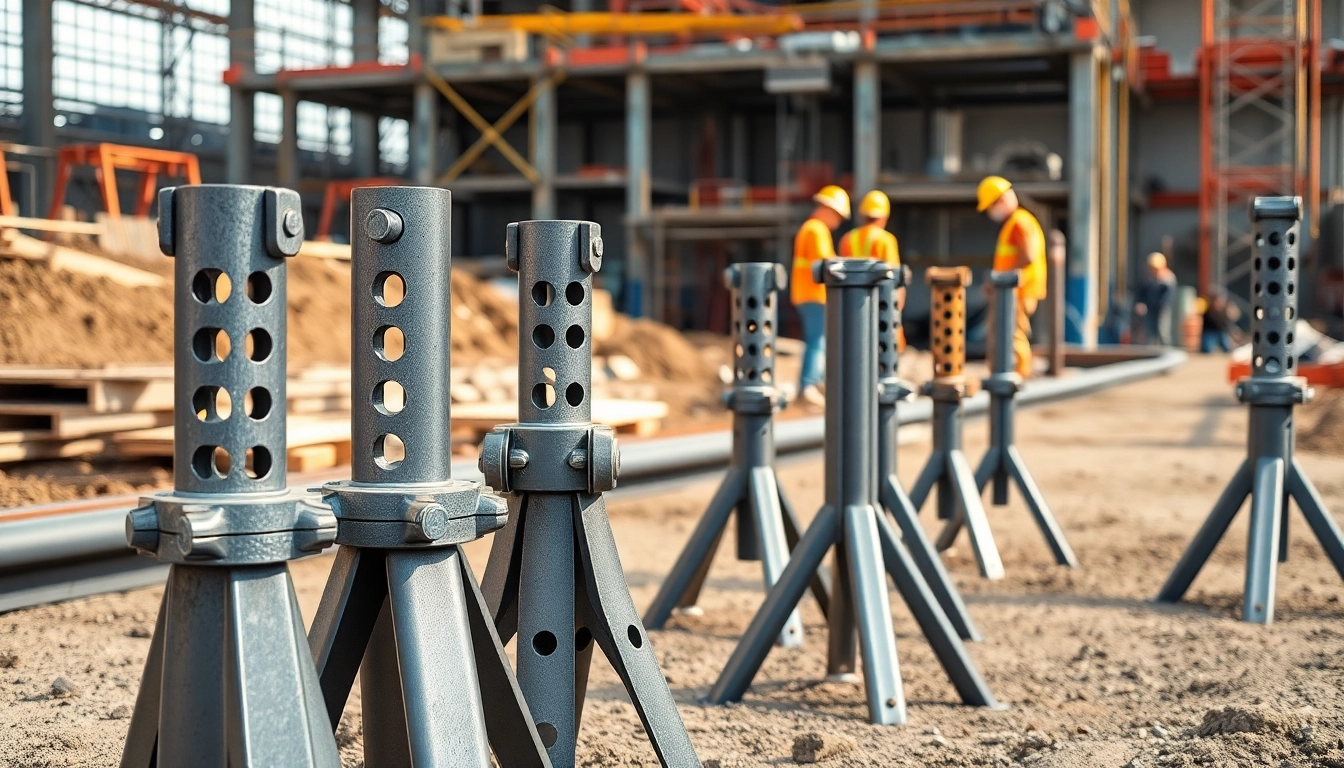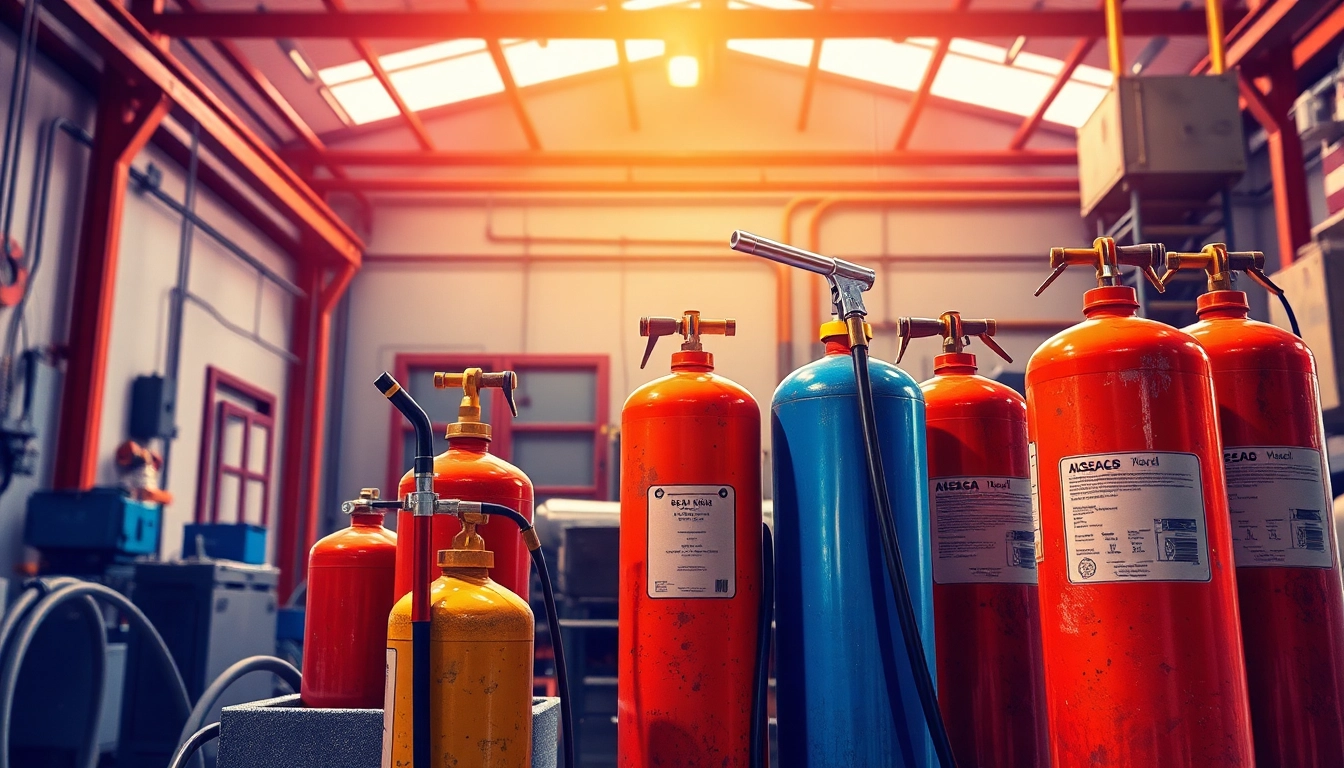Understanding Precision Die Cutting
What is Precision Die Cutting?
Precision die cutting is a manufacturing process that involves cutting materials into specific shapes and sizes using specialized tools known as dies. This method is universally recognized for its ability to produce highly accurate and consistent parts across various industries. By utilizing high-quality materials and advanced technology, precision die cutting can achieve extremely tight tolerances, often within ±0.005 inches or better, making it suitable for applications requiring exact specifications.
In essence, precision die cutting involves several techniques including flatbed, rotary, and laser cutting, each offering distinct advantages depending on the project’s needs. This versatility allows manufacturers to cater to a wide array of requirements, from intricate designs to mass production.
Key Applications in Industry
The applications of precision die cutting are vast, spanning multiple sectors including automotive, medical, electronics, packaging, and consumer goods. In the automotive industry, for example, die-cut components are used for gaskets, seals, and sound-deadening materials, which require precise fitting and functionality to ensure the overall performance of the vehicle.
In the medical field, precision die cutting is essential for producing components such as surgical drapes, masks, and wound dressings, where clean cuts and sterility are paramount. The electronics industry benefits from precision cut insulators, adhesive pads, and protective casings that require both accuracy and speed in production.
The packaging industry also heavily relies on precision die cutting for producing boxes, labels, and custom inserts, which enhance product presentation and protection. With such a wide array of applications, it’s no wonder that precision die cutting has become an integral part of the manufacturing process across many industries.
Benefits of High-Precision Die Cutting
The advantages of high-precision die cutting are numerous, making it a preferred method for many manufacturers. Firstly, the consistency in output quality allows for batch production with minimal variability, saving time and reducing waste. Secondly, the precision of the cuts ensures that parts fit together perfectly, which is critical in industries where safety and performance are on the line.
Moreover, precision die cutting can significantly lower production costs, especially for large runs, due to the efficiency of the process and the reduced need for post-production finishing. Additionally, it allows for greater design creativity, enabling complex and intricate designs that would be challenging to achieve through other methods.
Overall, high-precision die cutting facilitates improved manufacturing processes, leading to higher customer satisfaction and better market positioning.
Types of Precision Die Cutting Methods
Flatbed Die Cutting Explained
Flatbed die cutting is a traditional method used primarily for thicker materials such as cardboard, plastics, and composites. In this technique, a flat die is pressed against the material using a hydraulic press, cutting the material into desired shapes. The flatbed die cutting process is known for its robustness and ability to handle a variety of materials with different thicknesses.
This type of die cutting is ideal for low to medium run sizes due to longer setup times. However, it is capable of producing clean cuts and intricate designs, making it suitable for applications such as packaging prototypes, custom displays, and specialized fittings.
Rotary Die Cutting Advantages
Rotary die cutting offers a different approach by using cylindrical dies that rotate as material is fed through a roller. This method is particularly effective for high-volume production runs and is often employed in the creation of labels, flexible packaging, and gaskets.
One of the primary advantages of rotary die cutting is its speed. Given that the cutting and feeding processes occur simultaneously, it can achieve significantly higher production speeds than flatbed systems. Additionally, rotary die cutting minimizes several common production challenges such as waste and misalignment, thanks to its continuous feeding mechanism.
As a result, rotary die cutting is commonly used in industries requiring fast turnaround times and large quantities while maintaining high precision and quality.
Laser Die Cutting for Specialized Needs
Laser die cutting is a more modern technique that utilizes high-powered lasers to cut materials with incredible precision. This method is especially favored for intricate designs or specialized materials that may be challenging for traditional die cutting methods. The ability to control the laser’s intensity and focus allows for exceptional cuts and the ability to create complex shapes that enhance product aesthetics.
Laser cutting is ideal for applications in industries such as fashion for intricate textile designs, electronics for custom circuit board patterns, and promotional products for uniquely shaped merchandise. Furthermore, the process often results in clean edges without the need for additional finishing, thereby reducing production time and costs.
Choosing the Right Die Cutting Service
Evaluating Providers: Key Factors
When selecting a die cutting service provider, several key factors must be considered to ensure the partnership aligns with your manufacturing goals. Begin by evaluating the company’s experience in your specific industry and their range of capabilities. Experienced providers will not only understand the technical requirements but will also be able to offer insights and recommendations based on past projects.
Additionally, review their quality assurance processes. A reputable company will have rigorous testing and quality control measures in place to ensure that finished products meet specified tolerances and industry standards. Another crucial aspect is their turnaround time and capacity; understanding their production capabilities can help you gauge whether they can meet your project deadlines.
Cost Considerations for Precision Die Cutting
Cost is often a significant factor when it comes to precision die cutting services. It’s important to understand that while the price of die cutting may vary based on the complexity of the design and the materials used, the most effective providers will offer pricing transparency and break down costs for each component. Some factors contributing to the overall price may include:
- Material Type: Different materials have varying costs, which affect overall pricing.
- Volume: Higher volumes often lead to reduced per-unit costs, making large runs more economical.
- Design Complexity: Intricate designs may require more setup time and specialized tools, impacting costs.
- Die Maintenance: Ongoing maintenance and replacement of worn-out dies can also contribute to costs.
Ultimately, a comprehensive price analysis will help determine the most cost-effective solution for your precision die cutting needs.
Creating Custom Designs: What to Prepare
When preparing custom designs for precision die cutting, it’s crucial to provide detailed specifications to your die cutting service provider. Begin by ensuring your designs are created using industry-standard software, allowing for accurate measurements and compatibility with the die cutting machines. Consider the following aspects for successful design preparation:
- File Format: Most providers prefer vector files such as .DXF or .AI for precision.
- Tolerances: Define acceptable tolerances for your design to guide the production process.
- Material Specifications: Clearly state the type of materials to be used, as this impacts both design and cutting methodology.
- Production Quantity: Provide precise quantity requirements, as this will affect die selection and overall pricing.
By providing comprehensive and precise specifications, you not only streamline the production process but also enhance the quality of the final product.
Best Practices for Precision Die Cutting
Material Selection and Preparation
The selection of materials is a crucial aspect of the precision die cutting process. Different materials, such as paper, plastics, foam, metal, and textiles, each have unique cutting requirements and behaviors. It is vital to choose materials that not only meet design requirements but also enhance cost-effectiveness, leading to fewer defects and waste during cutting.
Furthermore, proper preparation of the materials before die cutting is essential. Materials should be prepped to ensure uniform thickness and accounted for any diagonal stretching that may happen through the cutting process. This proactive approach minimizes errors and enhances the consistency of the final outputs.
Identifying Tolerances for Your Project
Identifying and specifying tolerances is particularly significant for projects that require high precision. Tolerances dictate how much variation from the desired dimensions is acceptable, and improper tolerances can lead to product failures or the need for costly revisions. Factors affecting tolerances include:
- Material Type: Different materials respond differently to die cutting, influencing achievable tolerances.
- Cutting Method: Each method (flatbed, rotary, laser) has different capabilities regarding precision.
- Design Complexity: More intricate designs may necessitate tighter tolerances to ensure fit and function.
Prior to production, ensure alignment between your project’s requirements and the capabilities of the chosen die cutting method to achieve optimal results.
Quality Control in the Die Cutting Process
Quality control is paramount in precision die cutting to ensure that each finished product meets the defined specifications. Establishing robust quality control procedures throughout the production process can mitigate inconsistencies and defects. These procedures may include:
- In-Process Inspection: Regular checks during production to confirm quality and process adherence.
- Finished Goods Testing: Samples of the final output should be tested against design specifications and tolerances.
- Feedback Loops: Establishing a feedback mechanism with your provider to address quality concerns swiftly and effectively can drive continuous improvement.
In implementing these quality control strategies, manufacturers can maintain high standards and build long-term trust with customers.
Future Trends in Precision Die Cutting
Integration of Automation and AI
The future of precision die cutting is closely aligned with advancements in automation and artificial intelligence. Automated die cutting machines are being developed to improve production speeds, consistency, and flexibility. With AI integration, these machines can dynamically adjust to various conditions, optimizing the cutting process in real-time based on material behavior and design complexity.
Furthermore, data analytics can be used to monitor machine performance and identify areas for improvement, leading to higher operational efficiency and reduced downtime. As technology continues to evolve, manufacturers who adopt these innovations will likely maintain a competitive edge in the marketplace.
Sustainable Practices in Die Cutting
With growing concerns about environmental impacts, precision die cutting is moving towards more sustainable practices. Manufacturers are increasingly sourcing eco-friendly materials, incorporating energy-efficient machinery, and optimizing operations to reduce waste. Strategies may include:
- Material Recyclability: Opting for materials that are recyclable and have a lower carbon footprint.
- Waste Management: Implementing recycling processes for scrap materials generated during die cutting.
- Energy Efficiency: Upgrading equipment to consume less power, reducing overall carbon emissions.
By prioritizing sustainability, manufacturers not only comply with regulations but also appeal to environmentally conscious consumers and stakeholders.
Innovations Driving the Industry Forward
Innovation remains at the forefront of the precision die cutting industry, propelling advancements that enhance production capabilities and product quality. Emerging technologies, such as digital die cutting, allow for greater customization without the need for expensive dies. Digital die cutting offers an agile solution for short runs and prototypes, empowering designers to test designs with minimal investment.
Moreover, advancements in software and machine learning are enabling more accurate forecasting of production needs, improving inventory management and supply chain logistics. Overall, continual innovation promises to push the boundaries of precision die cutting, eventually transforming manufacturing practices across all sectors.


